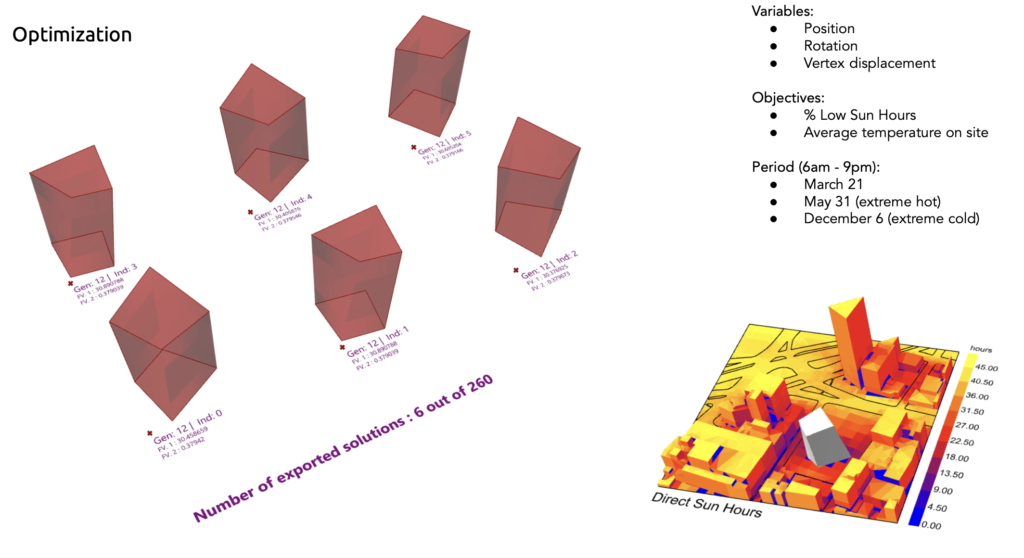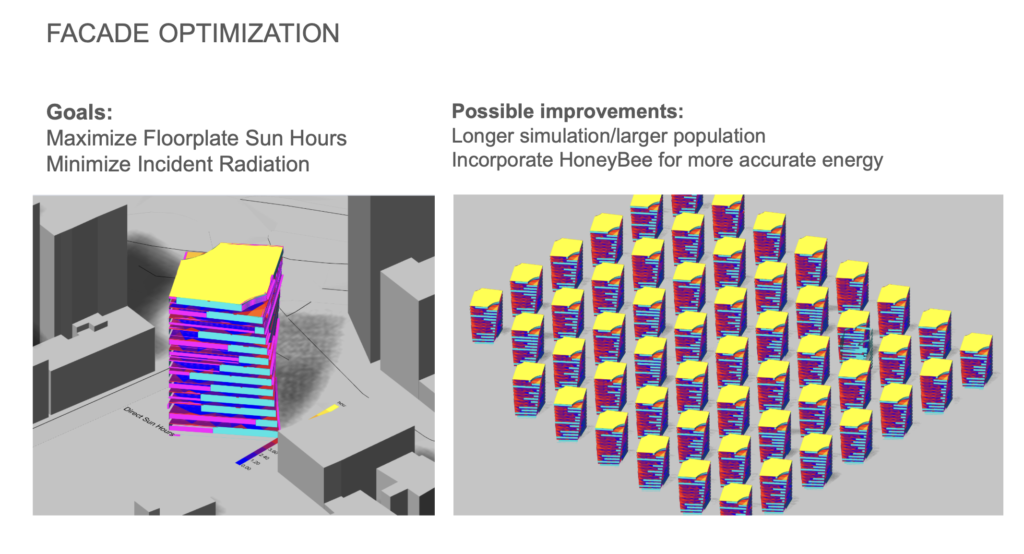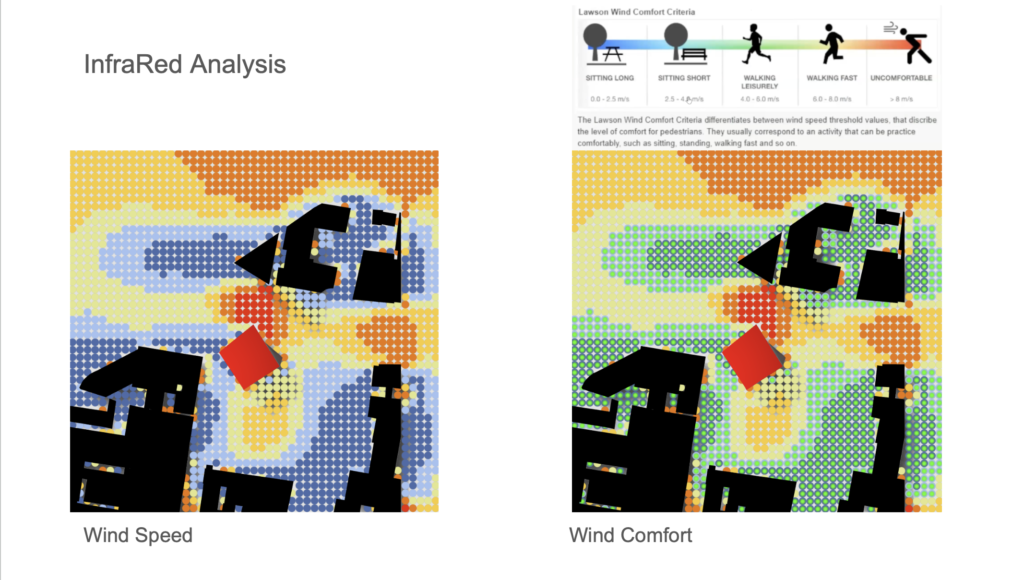Our environmental analysis focused on the unique case of Mexico City, a captivating subject due to its distinctive geographical conditions, being built over the “Lago de Texcoco”.

The first is a stable climate season marked by regular weather conditions, while the second is an extreme heat season. This observation underscores the complexity of Mexico City’s climatic dynamics, shedding light on the challenges and opportunities inherent in its environmental context

After selecting a site, we established our primary design objective: to conceive a building with climate optimization strategies that extend beyond self-comfort to actively benefit the surrounding context. This approach seeks to prioritize environmental sustainability and community impact, acknowledging the interplay between architectural design and the broader ecological and social landscape. By emphasizing the positive influence the building can have on its surroundings, our goal is to contribute to a more harmonious integration of the built environment within its larger ecosystem.

Following a sun exposure analysis throughout the year, we built a parametric model to optimize variables such as position, rotation, top vertex displacement (XYZ), and bottom vertex displacement (XY). Our primary objectives were to minimize low sun hours and optimize the average temperature on-site. The model influenced decisions related to the placement, orientation, and volume of the structure, aligning with our goal of climate-responsive design.


With a favorable geometry in place, we expanded our project by conducting a sun daylight study to optimize the facade and a wind comfort analysis. These additional assessments contribute to the refinement of our design, ensuring both energy efficiency and occupant well-being are prioritized in the development of the architectural proposal.
These steps also take into account the impact of the design on the local climate of the site, ensuring that our choices contribute positively to the surrounding environment and enhance the overall microclimate.

In an attempt at a building scale optimization, we tried to create an aesthetic facade that wraps around the building at different intervals. The goal was to maximize the sun hours inside the building so that it would be sufficiently lit, while simultaneously limiting the incident radiation. In other words, how to get the maximum lighting with the lowest energy impact. The study could further be improved with the incorporation of Honeybee to get a more accurate representation of the energy model, as well as using a larger sample size to explore more possible results.
For the next step, we conducted a study on wind patterns employing Wind Rose and Computational Fluid Dynamics (CFD) analyses. This analytical approach was crucial in deepening our understanding of wind behaviors specific to the study site. The objective was to uncover challenges and identify potential opportunities that could inform subsequent design decisions.



The wind creates to zones, a calmer low pressure zone in this new courtyard type space which is protected by the building, however there are also zones of incredibly high pressure created around the building. This would need to be addressed in future iterations of the building.

We were also able to run our model as an InfraRed model in grasshopper. As you can see, the results are very similar to the results of the CFD simulation. In confirms that there is a large zone of high wind pressure in the courtyard area the building was originally intended to protect from the sun. The graphic on the right shows the location of comfortable winds.

